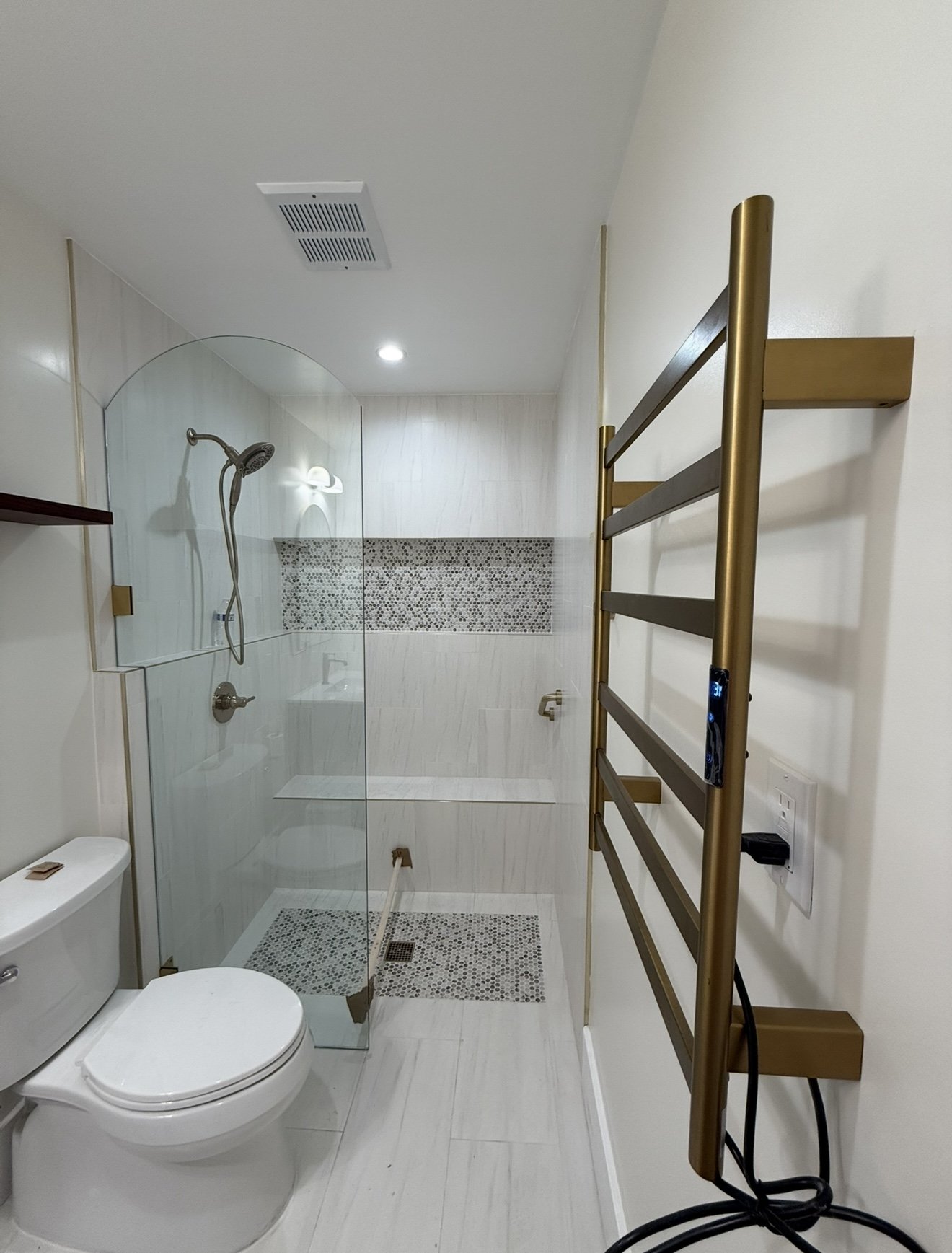Aging in Place in San Diego: Making Your Home Work for You as You Get Older
For many people, the idea of leaving their home as they get older isn’t just unappealing—it’s completely off the table. Your home is where you've built memories, where you feel comfortable, and where you should be able to stay for as long as possible. That’s what aging in place is all about—modifying your home to make it safer, easier to navigate, and more comfortable so you can maintain your independence without having to move.
At Honeycomb Design & Remodel, we work with homeowners in San Diego to help them create spaces that work for their changing needs—whether that means making small adjustments now or planning for the long term. If you or a loved one want to stay in your home for years to come, here’s what you need to know.

What Does Aging in Place Actually Mean?
Aging in place means staying in your home as you get older, rather than moving to an assisted living facility or nursing home. But it’s not just about staying put—it’s about making sure your home continues to work for you. That might mean adding safety features, improving accessibility, or updating your layout so you can move around with ease. The key is planning ahead—before changes in mobility or health make it harder to get things done on your own.
Why Do So Many People Want to Stay in Their Homes?
It’s simple: home is familiar. And for a lot of people, that familiarity brings comfort, independence, and security. Here’s why aging in place is so important:
-
Staying independent – Nobody wants to feel like they’re losing control over their own life.
-
Emotional connection – Your home holds years of memories that can’t be replaced.
-
Cost savings – Assisted living and nursing homes can be incredibly expensive.
-
Comfort in routine – Moving to a new place often brings stress and uncertainty.
How to Make Your Home Work for Aging in Place
Your home should work for you, not the other way around. Small tweaks can make a huge difference in comfort and safety. Here’s where to start:
1. Make Bathrooms Safer
-
Install grab bars near the toilet and in the shower.
-
Swap out bathtubs for walk-in showers with seating.
-
Choose non-slip flooring to prevent falls.
-
Use motion-sensor lighting for better visibility at night.
-
Upgrade to comfort-height toilets to reduce strain when sitting or standing.
2. Improve the Kitchen for Easy Use
-
Lower countertops and cabinets for easier access.
-
Add pull-out shelves and drawers to reduce bending and reaching.
-
Install touchless faucets for effortless use.
-
Use better lighting, especially under cabinets.
-
Consider side-opening ovens that are easier to reach than traditional models.
3. Remove Barriers in Entryways & Hallways
-
Widen doorways to accommodate walkers or wheelchairs.
-
Remove steps at entryways and install zero-step entries.
-
Swap out door knobs for lever handles, which are easier to grip.
-
Add stairlifts or ramps where needed.
-
Use slip-resistant flooring in high-traffic areas.
4. Make Bedrooms Comfortable & Functional
-
Upgrade to an adjustable bed for easier movement.
-
Install light switches near the bed for convenience.
-
Use closet organizers with pull-down rods and open shelving.
-
Place nightlights or motion-sensor lighting to reduce fall risks.
5. Use Smart Technology to Make Life Easier
-
Voice-activated assistants (like Alexa or Google Home) can set reminders or call for help.
-
Smart doorbells with cameras add security and allow remote monitoring.
-
Automated lighting & thermostats improve safety and efficiency.
-
Medical alert systems provide instant assistance in case of emergency.
-
Motorized window treatments eliminate the need to adjust blinds manually.
Planning for the Future: The Best Time to Start Is Now
If you want to stay in your home for the long haul, it’s best to start making changes now—before they become urgent. Many homeowners wait until an accident or health concern forces them to make adjustments, but planning ahead gives you more control and spreads out the cost of modifications over time.
Here’s how to get started:
-
Walk through your home and spot potential hazards. Are there stairs that might be an issue later? Are high cabinets hard to reach? Are the floors slippery?
-
Talk to an expert. A San Diego remodeling contractor specializing in aging in place can help you come up with a plan.
-
Prioritize key updates. Focus on areas that will have the biggest impact—like the bathroom, kitchen, and entryways.
-
Think about the long term. Even if stairs aren’t a problem now, will they be in five years? Planning ahead will save time, money, and stress down the road.
How Much Does It Cost to Remodel for Aging in Place?
Every home and project is different, but here’s a general idea of costs:
-
Basic safety updates (grab bars, lighting, tech upgrades): $2,000 – $5,000
-
Bathroom remodel with accessibility features: $15,000 – $30,000
-
Kitchen updates for accessibility: $20,000 – $50,000
-
Full home renovation for aging in place: $50,000 – $150,000+
Investing in these updates now can save money in the long run, preventing costly hospital stays or the need for assisted living later on.
Finding the Right Aging-in-Place Remodeler in San Diego
Not all contractors understand the unique challenges of aging-in-place design. At Honeycomb Design & Remodel, we create beautiful, functional spaces designed to make life easier—without sacrificing style. Whether you need a few small adjustments or a full-home remodel, we’re here to help.
Thinking about making your home safer for the future? Let’s talk. Contact Honeycomb Design & Remodel today for a consultation!

